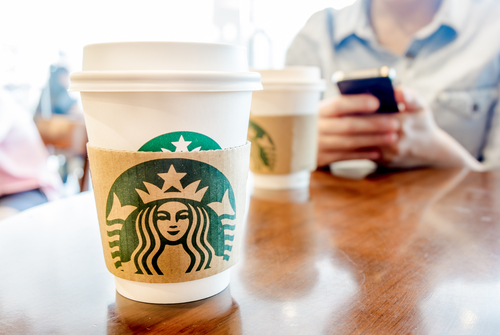
In the past year, we have seen many advances in cross-channel marketing technology, but none has been so groundbreaking as the consumer shift toward mobile devices. Over 60% of consumers’ time online is now spent either on a smartphone or tablet—that means that your business has to be prepared to receive these mobile users. And don’t assume that we’re only talking about apps and mobile websites. On the contrary, SMS marketing is just as crucial a part of mobile marketing. Let’s take a look at what two marketing powerhouses – Starbucks and Subway – have done to revolutionize their marketing campaigns.
Starbucks’ Mobile Marketing
Starbucks started (and perfected) the integration of the mobile app into consumer activities. Through its app, Starbucks offers special gifts like coupons, free drinks, and birthday freebies. Further, Starbucks has streamlined the transaction process for the consumer, allowing customers to purchase coffee and receive points using a QR code displayed on their phones. Additionally, Starbucks has a robust loyalty program for its customers. The loyalty program also collects consumer information in order to create tailored, tasteful ads for the company’s customers.
Of course, not all mobile users are interested in loyalty programs and apps. Hence, Starbucks utilizes a different strategy for SMS marketing. The focus lies less on the brand and more with what consumers want. Since text messages have an open rate of over 90%, Starbucks was able to access an additional marketing stream for loyal consumers without alienating those customers who might not want to download an app. The strategy involves inviting customers to store locations by providing simple content that drives specials and impels customers to visit.
Subway’s Text Marketing
Subway has beefed up its SMS marketing strategy as well. Subway recently inked a deal with the company Mobivity, a mobile marketing technologies and solutions firm. Mobivity will operate on both a local and a national level to provide SMS content from its platform.
Mobivity also boasts some excellent technology to sweeten the pot in the form of a program called SmartReceipt. When a customer makes a purchase at a Subway with this technology, he or she receives a SmartReceipt. The receipt contains content and calls-to-action designed to invite guests to opt in to a reward program. Additionally, the SmartReceipt program targets local customers with in-store promotions and offers. This technology allows Mobivity to collect customer info on both centralized and nationwide levels – information that may be used by Subway to market more directly to its customers.
The real lesson here is not that a move to mobile marketing is a terrific option for any business; rather, mobile is becoming a necessary arm of a company’s overall marketing strategy. And SMS is one of the simplest and most effective ways to market for mobile, especially when it comes to ROI. Now don’t go abandoning your traditional forms of advertising in favor of mobile. Mobile marketing is a supplemental new avenue to explore in the campaign, and it is only going to grow in the coming years. Take it from Subway and Starbucks: SMS marketing is thriving and here to stay.
